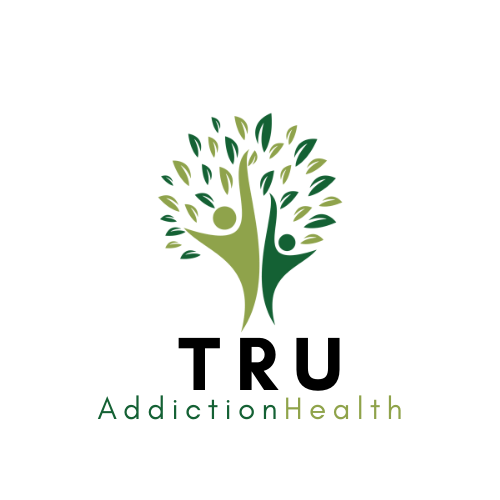Regardless of the most recent stats revealing an increase in opioid use and overdoses amongst women in Massachusetts, the number of women seeking addiction treatment has actually dropped drastically.
While the pandemic provided difficulties to accessing treatment since of staffing and issues about gather together settings, state authorities are looking at other aspects that might lag the drop. On the other hand, there are signs that lower need is altering some programs, specifically those particularly for women.
Numerous providers stress that drop in need might result in fewertreatment programs Some loved ones of women having a hard time with addiction are voicing issues as well.
Amongst them is Patti Moms And Dad, of Whitman. Moms and dad credits a women’s treatment program on Cape Cod for offering her 3 excellent years with her child, Katie.
In high school, Katie was a great trainee, a cheerleader, even prom queen– two times. However after graduation, drugs surpassed her life and she went through numerousaddiction treatment programs The one location that appeared to help was Emerson Home, part of Gosnold Treatment Center on Cape Cod, where Katie went for 3 months in 2012.
” She resembled herself once again when she went out of there, and it was truly great,” Moms and dad stated. “I seemed like I had my child back.”

Katie was succeeding for a while, taking care of her kids and getting her life together. However recovery usually isn’t direct and Moms and dad got back one day to hear Katie’s children calling for help since they had actually discovered Katie, who was then 35 years of ages, on the flooring unresponsive.
” My granddaughters were shouting, ‘Nana, Nana, mother isn’t breathing,'” Moms and dad stated.
Moms and dad was trained to administer the anti-overdose medication naloxone. She attempted with Katie.
” I offered it to her twice however it didn’t work,” Moms and dad stated, tearfully. “And my next-door neighbor next door came by and assisted. And the ambulance came and whatever, the cops and it was simply terrible.”
Since that day in 2015, Moms and dad frequently went to Emerson Home in Katie’s memory. Moms and dad would frequently bring toiletries or art products for thepatients She stated the check outs were to reveal appreciation for the time she had with her child.
” When I brought products and things, it resembled, you understand, these women are working on it, so attempt to help them out as much as I can, even a bit,” Moms and dad stated. “And Katie simply loved it there.”
So Moms and dad was bothered when she found that Gosnold Treatment Center, which ran Emerson Home, no longer uses single gender treatment and ended its program for women and their children.
” It was truly excellent in it being simply for women,” Moms and dad stated. “It made the women more comfy. You understand, my child would not have actually opened if it was a coed thing.”
Authorities at Gosnold state they’re altering all of their programs, not since of lower need from women always however to provide treatment that focuses on a variety of mental health concerns that frequently accompanyaddiction State information reveal that mental health care is important for effective addiction treatment since bad mental health is connectedwith addiction Gosnold is progressing, CEO Richard Curcuru states, since there were too couple of treatment beds to fulfill the need for more detailed care.
” We were mainly an addiction center, now we’re a behavioral health company,” Curcuru stated. “We’re treating patients who are suffering both from substance use disorder and a co-occurringmental illness And we understand that 85% of the patients who have an addiction likewise have a co-occurringdisorder So to deal with one without the other is truly irresponsible.”
Gosnold is not alone in reacting to modifications in the treatment landscape. Numerous providers acknowledge that fewer women have actually been seeking treatment, specifically throughout the pandemic. The state is checking out this decrease which comes amidst studies recommending that the number of women who reported utilizing compounds – mostly since of pandemic stress – is on the increase.

Last summer season, the number of recommendations Triumph Programs in Boston got for women was down by practically 2 thirds because prior to the pandemic started. While that number has actually increased because, some of Triumph’s coed programs are now serving all males so as not to have a waiting list for males and empty beds reservedfor women Male represented practically 3 quarters of all admissions to Massachusetts treatment programs in the last .
” We have actually taken programs with coed licenses and began providing them as male programs for now and keeping that they are coed so that if or when women return to seeking treatment, we will have beds offered for them,” stated Elizabeth Blackstone, director of Residential Recovery Provider for Triumph Programs.
At the Dimock Center in Boston, Maia Betts, the center’s Chief Behavioral Health Officer, states there are numerous factors women may select not to seek treatment consisting of parenting obligations.
” Not all beds are being filled frequently and we are looking at those incentives for treatment,” Betts stated. “One incentive is kid care, kid care concerns and custody concerns. Women are pulling out of treatment to guarantee that their kids remain in their custody.”
Betts stated some women danger losing custody of their kids if they have asubstance use disorder Even at Dimock, which has programs created for women attempting to reunite with their kids, Betts states women are in some cases hesitant to go intotreatment 9 of Dimock’s 39 detox beds are for women and Betts stated frequently some of those beds are empty.
Addiction scientists hope the lower need does not imply fewer treatment optionsfor women Dr. Shelly Greenfield, at McLean Hospital, states numerous research studies reveal that women specifically gain from programs that can particularly resolve injury, sexual abuse and violence and family caretaking obligations. For numerous women, Greenfield states, these subjects can be hard to freely address in combined gender settings.
” Overarchingly the research study recommends that for women in specific, gender-specific treatment can be really handy to their recovery process,” Greenfield stated. “It is not that combined gender treatment is noteffective It’s that for a considerable group of women, the women’s focused treatment will be the one where they can feel themselves able to resolve the really particular difficulties and requires that they have, both in their addiction, however likewise in how they will engage with treatment and sustain their recovery gradually.”
The state says it’s gathering information to figure out why fewer women appear to be attempting to gethelp Deirdre Calvert, director of the state Bureau of Substance Addiction Providers, states the number of treatment beds for women has actually increased by 18% over the previous 5 years however some of those beds are “underutilized.” Calvert states more women requirement treatment however they’re not getting it.
” These programs, numerous of them were developed years earlier by white males with alcohol issues, right?” Calvert stated. “Therefore they do not really match the requirements for a BIPOC female or female with kids or someone who’s skilled homelessness or injury or has actually been trafficked.”
Calvert states her workplace, under the Department of Public Health, is thinking about some brand-new methods, such as making telehealth much easier and looking at the participation of kid well-being companies when a mom is utilizingaddiction treatment medication The pandemic and staffing concerns, Calvert states, have actually intensified the troubles dealing with women with substance use disorders.
” The child care, the absence of financial resources, the house education, the mental health, the increase in use– all of those things are making it far more difficult,” Calvert stated.

State information reveal a 15% increase in the number of women who passed away of opioid overdoses in 2020 compared with the previous year.
Patti Moms and dad has actually seen the boosts because her child’s death and questions why there isn’t more seriousness about improving treatment so more women will seek help.
” You understand, [addiction is] all over,” Moms and dad stated. “It does not have any limits. And up until something modifications, absolutely nothing’s going to modification.”
